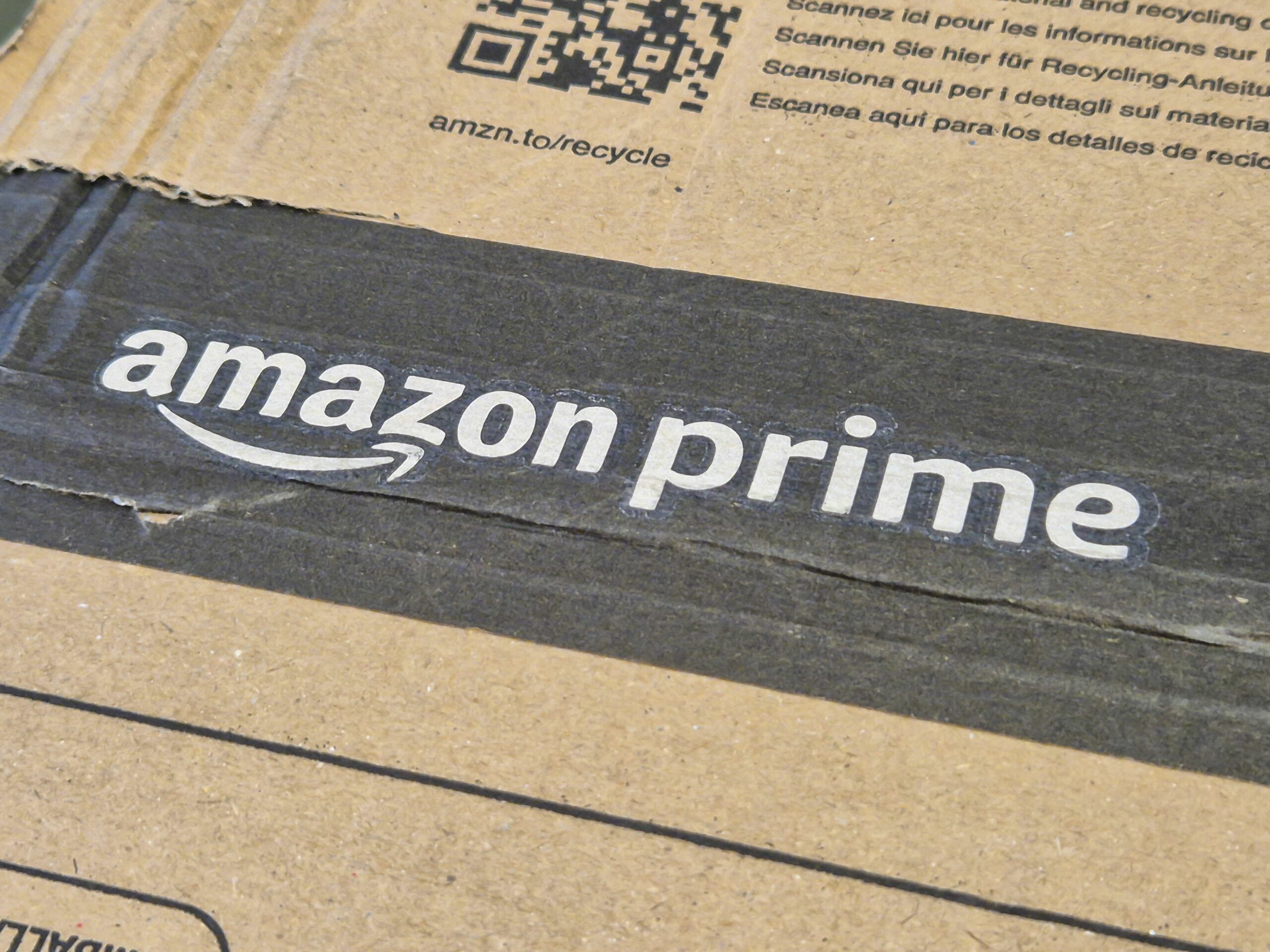
photo_pw/Depositphotos.com
September 8, 2025
Should Amazon Be Cracking Down on Free-Shipping Sharing?
Amazon is phasing out Prime Invitee, a 16-year-old perk that let Prime members share free shipping with a family member or friend who lives somewhere else.
According to Inc., Amazon had long let Prime subscribers add an “invitee,” whether a friend, relative, or roommate, to their membership to let them enjoy free two-day shipping and other perks without paying for their own membership. The report said, “It wasn’t widely advertised, but it became a quiet favorite among people who didn’t want to shell out $139/year.”
Amazon stopped letting Prime members join the invitee program in 2015, but it allowed users who previously joined to continue sharing their free shipping benefit.
Amazon Nudges Consumers To Buy Prime Subscriptions
The move to end the perk was seen as a way to boost subscribers.
The New York Times writes, “Prime memberships and other subscription fees account for about 7% of Amazon’s sales, amounting to more than $12 billion in the last quarter alone. But the growth rate of Prime subscriptions has stayed in the low double-digits for almost two years. Most American households that can afford a Prime membership already have one, analysts have said. This change allows Amazon to find more customers who will sign up and pay for their own accounts.”
Amazon members that are part of the Prime Invitee program are being encouraged to join Amazon Family, a new program with no additional charge that lets account holders share the free two-day shipping perk with only one other adult in their household, up to four teens (who were added before April 7), with room for up to four profiles for children.
Amazon Family also includes additional benefits such as sharing Prime Video, Amazon Music, Kindle eBooks, audiobooks and games, but only within the same household. The Invitee program only included free shipping.
“The Invitee program, which enabled sharing of the Prime shipping benefit only, is being phased out, and Prime members can instead share a broad range of Prime benefits with Amazon Family,” an Amazon spokesperson said in a statement to CBS News.
Family members or friends that used to be part of the Prime Invitee program and live somewhere else will have to purchase a Prime subscription. The Prime Invitee program ends at the start of October.
Amazon Offers an Olive Branch to Prime Invitee Beneficiaries
To smooth the transition, Amazon is offering individuals affected by Prime Invitee ending a chance to sign up for twelve months of membership at $14.99. After the year ends, they’ll have to pay the annual fee of $139 for membership, equaling to $14.99 per month.
Amazon’s move is the latest to squash the “mooch economy” or subscription freeloading. Similar changes such as end of Netflix’s and Disney’s password sharing and further restrictions on Costco’s membership card sharing all led to new membership signups.
Discussion Questions
Do you think Amazon made the right call in ending its Prime Invitee free-shipping perk for family or friends living outside the household?
Has the broader crackdown on sharing accounts by subscription services been much more positive than negative?
Poll
BrainTrust
Brian Numainville
Principal, The Feedback Group
Oliver Guy
Global Industry Architect, Microsoft Retail
Scott Benedict
Founder & CEO, Benedict Enterprises LLC
Recent Discussions







Prime is the biggest paid for retail program in the US. It has grown extensively over the years, so it is now at a point where incremental gains are harder to secure. A natural response is to clamp down on the sharing of membership benefits to try and drive up subscription sign-ups and revenue. We saw Netflix use this tactic for similar reasons. There are risks, most notably those losing the benefit abandoning Amazon or using it less which would impact retail and third-party fees. But the betting is that most of those affected will get Prime for themselves – especially so since Amazon is improving delivery times so more of the country has access to very fast shipping.
The title here seems misleading: one cracksdown on wrong doing, but the sharing mentioned wasn’t that…Amazon is instead limiting a perk. Is that a good idea? If we believe that free shipping is ultimately an uncontrolled menace, then the answer is “yes” (and in this case the obvious question is “why can’t family members get their own membership?”)
Why indeed…?
They made the “right” call if the goal is to drive Prime Membership revenue. Which I suspect it is. As Prime Membership growth slows, it’s not surprising that Amazon is imposing restrictions. There’s little doubt that Amazon is counting on some percentage of the Invitees to be hooked on Prime and buy full memberships. However, in other cases, people will just adjust their behaviors to get around this new requirement. The broader crackdown on subscription sharing by Amazon others isn’t a positive for their customers – though I have little doubt it will make their respective CFOs happy.
I was halfway through the article, and I already thought of a workaround.
The invitees were getting more than free shipping; they were an unpaid marketing force that amplified Amazon’s speed and convenience, even though they lacked financial commitment. Now Amazon is forcing a binary choice: pay up or lose access to the habit you’d come to enjoy.
Amazon’s betting that household penetration saturation justifies cannibalizing goodwill. But in an era where competitors like Walmart+ and Target Circle are aggressively courting price-conscious consumers, alienating cost-conscious customers who were “trying before buying” through invitees could backfire.
Of course, Amazon ran the numbers; however, the risk remains: will the short-term subscription revenue boost offset the long-term customer acquisition cost increase when former invitees choose competitors instead of paying up? Perhaps Amazon’s next phase is not market share growth but margin optimization.
The optimist could look at “…pay up or lose access to the habit you’d come to enjoy…” as ‘Now that you fully understand the value of Amazon Prime, and you’ve been freeloading for some time, it’s time to start your own subscription.’ and the new subscriber will know exactly what its getting. It depends on perspective.
Technology could be the answer. Netflix does a great job of ensuring that only subscribers can watch, and has figured out how to deal with customers who have multiple residences. Amazon will have to figure this out.
I’ve noticed many brands are finding ways to tighten up their liberal policies, be it returns, shipping, membership, and more. When big brands make a change, it makes headlines. One of the first brands that came to mind (as did for other Braintrust members), was Netflix. Now Amazon is changing or tightening its “rules,” and the press and customers are noticing.
Nothing stays the same forever. What worked at one time may become obsolete. Smart companies/brands recognize the need for a change before it’s too late. Some of these changes aren’t met with customer approval. But when Amazon makes a change, they always consider how the customer will react, good or bad, and then make the decision (or not).
This isn’t as much about sharing accounts as it is about changes to keep overall costs down, which is one reason Amazon continues to be a leading retailer.
Just thinking out loud… I haven’t seen the numbers, but if Amazon didn’t change the sharing policy and raised their prices to offset the loss of revenue, I wonder if that wouldn’t cost the customer more money than purchasing another Prime membership for a family member who doesn’t live at home.
It’s 2 part… the first is easing the separation with an LTO.
Then, a year from now, does the complete upsell (to full price membership) work? Retention is probably better than large drop (via protest) to be won back.
A discounted rate of $14.99 for the first year of an annual membership for former Prime Invitee program members, before reverting to the standard rate of $14.99 per month or $139 per year. [For new members, Amazon offers a choice between a monthly plan at $14.99 or an annual plan at $139.]
I’m confused. If I want to ship a gift to someone, does this mean I cannot? Or is this additional shipping address thing something I missed?
I love commenting on topics that impact me directly as a consumer while considering the business aspect for the company concerned – this is one such example.
Corporate history has numerous examples where ‘offerings’ get scaled back piece by piece over time for example:
Every one of these examples has been about margin and ‘revenue maximisation’ – if for example you sell 1 million cars per year, saving $30 per vehicle with no impact on the selling price becomes a huge saving.
In a similar way, the cost to Amazon of delivering to multiple addresses must be huge – it potentially offers the opportunity to offer a ‘Prime Plus’ offering that gives greater benefits – but for higher cost or simply charge an order specific fee.
Personally I have used the multiple address capability for specific purposes – to aid furnishing my son’s student accommodation – sending directly to his home, to ship Christmas presents to where we are staying for Christmas as a way of hiding from the recipients, or to send gifts. All of these are things that have helped me – would I pay a premium for them – perhaps. It is an annoyance but I sympathise with Amazon’s business needs to do this.
Amazon’s decision to end the Prime Invitee free-shipping perk makes sense from a business standpoint—subscription growth has slowed, and this move nudges “free-riders” toward becoming paying members. It mirrors what we’ve seen from Netflix, Disney, and Costco in tightening account sharing.
That said, there’s a trade-off. While it strengthens revenue and protects the value of Prime, it risks alienating loyal customers who feel squeezed by rising costs and shrinking perks. Overall, the broader crackdown on account sharing has been positive for company balance sheets, but it comes at the expense of customer goodwill—a balance retailers will need to watch carefully.
As long as kids away at school can share the membership, I am OK with the change. But, even then, there is a workaround.
While nothing stays the same forever, and certainly this is a revenue play for Amazon as a much more established business, it won’t make for happy shoppers (or Amazon business customers) for whom it is a bummer.
Is this going to move the needle on Amazon subscription sales? Probably not.
Two of my three adult children live within 15 miles of my house. Mrs. S insists on attendance at dinner, one of her incentives: “Your Amazon packages are here.” Apparently, we’re already getting around this, mostly because I didn’t bother to learn about Invitee and because my kids are happy to drive home for free-to-them shipping. I suspect we’ll see more creative workarounds as this roles out.
But here’s the real question: Was it wise to eliminate a benefit that reinforced Prime’s long-term value—especially among future subscribers who were already behaving like loyal customers? In an era when Walmart and others are coming directly after Prime, Amazon may be trading relational stickiness for short-term sales.
There comes a point in every popular retailers business life at which it has to face reality and has to start showing healthy profits. The current free shipping policy was nice for attracting new families to the subscription but the business is fully mature now and there is no longer reason to continue a financially questionable program.
‘Free’ services that are offered as customer acquisition tools make abundant sense, until diminishing ROI on that expense suggests that it’s no longer a smart investment, even considering some of the ruffled feathers. It sounds like Amazon is orchestrating a very reasonable transition to a new program. I think most customers know that they have been spoiled rotten for a long time by Amazon’s generous program. Amazon has created deeply embedded thought processes and behaviors at this point. They will be able to monetize those thoughts and behaviors for a long time to come.
Sharing programs can drive goodwill, but once households are saturated, it’s understandable that Amazon wants to shift users to individual memberships. This move will frustrate some users, but their value proposition is strong, and those who have experienced the perks of Prime are likely to see the benefit in paying to keep them.
While affected customers will miss this generous perk, Amazon has the right to rescind it. If this free delivery benefit is deeply entwined in customers’ habits, they will find a way to afford it. The $14.99 interim offer for one year of membership is benevolent for continuity of delivery — plus all Amazon’s other addictive benefits.
Amazon’s decision is aimed at driving more Prime subscriptions, but it comes with trade-offs. Prime Invitee wasn’t only about free shipping. The program gave people a chance to experience Amazon’s convenience and often led to future subscriptions.
Now Amazon is shifting focus from customer acquisition to revenue. That makes sense at saturation, yet the move risks pushing cost-conscious customers toward Walmart+ or Target. Subscription programs work best when they balance revenue with reach. Leaning too much on margin could increase the long-term cost of winning customers back, outweighing short-term subscription gains.